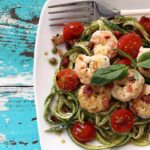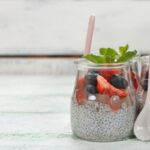Embark on a culinary journey that redefines healthy eating! Imagine vibrant meals bursting with flavor, crafted from nature’s bounty, without the reliance on oils. This isn’t just a diet; it’s a lifestyle shift towards a more vibrant, energetic you. Discover the transformative power of oil-free Paleo, unlocking the secrets to a healthier, more fulfilling life through delicious, nutrient-rich recipes and insightful guidance. Prepare to be amazed by the simplicity and the depth of flavor achievable through innovative cooking techniques.
This guide delves into the core principles of oil-free Paleo, comparing it to traditional Paleo approaches while highlighting the unique nutritional advantages. We’ll equip you with essential oil-free cooking techniques, providing step-by-step recipes and meal planning strategies. Learn how to navigate potential nutritional challenges, maintain long-term sustainability, and seamlessly integrate this approach into your daily life, even when dining out or attending social gatherings. Get ready to savor the taste of health and vitality!
Addressing Nutritional Needs on an Oil-Free Paleo Diet

Successfully navigating an oil-free Paleo diet requires a mindful approach to nutrition, ensuring you’re meeting your body’s needs without relying on added fats. This involves careful consideration of macronutrient balance, nutrient timing, and proactive strategies to prevent potential deficiencies. A well-planned oil-free Paleo diet can be incredibly nourishing and support optimal health.
Macronutrient Balance and Nutrient Timing
The oil-free Paleo diet emphasizes whole, unprocessed foods, primarily focusing on lean protein, complex carbohydrates, and naturally occurring fats found within these foods. Maintaining a balanced intake of these macronutrients is crucial. Nutrient timing, while not as strictly defined as in some athletic diets, involves consuming nutrient-rich meals strategically throughout the day to support energy levels and satiety. For example, a protein-rich breakfast might include eggs and vegetables, providing sustained energy and preventing mid-morning hunger. A lunch featuring a large salad with lean protein and plenty of vegetables would further support energy and nutrient intake. Dinner might then focus on a lean protein source such as fish or chicken alongside a generous serving of vegetables. This approach ensures a steady supply of nutrients without the reliance on added oils for satiety.
Potential Nutrient Deficiencies and Mitigation Strategies
While an oil-free Paleo diet is rich in many nutrients, potential deficiencies can arise if not carefully managed. For example, vitamin A, vitamin D, vitamin E, and certain minerals might require attention. Vitamin A is readily available from liver, sweet potatoes, and leafy greens. Vitamin D requires sun exposure or supplementation, especially in areas with limited sunlight. Vitamin E is present in nuts and seeds (though portion control is important given the fat content), avocados, and leafy green vegetables. Careful planning and supplementation, when needed, can effectively address these potential concerns. A consultation with a registered dietitian or healthcare professional specializing in Paleo nutrition is recommended to personalize your approach and monitor your nutrient levels.
Ensuring Adequate Intake of Essential Fatty Acids
Essential fatty acids (EFAs), such as omega-3 and omega-6 fatty acids, are crucial for various bodily functions. While added oils are excluded, EFAs are naturally present in many oil-free Paleo foods. Fatty fish like salmon and mackerel are excellent sources of omega-3s. Grass-fed meats and poultry also contain beneficial fats. Avocados, nuts, and seeds provide healthy fats, but should be consumed in moderation due to their calorie density. Prioritizing these whole food sources can ensure sufficient EFA intake without resorting to added oils. However, individuals concerned about their intake may consider a high-quality fish oil supplement after consulting their healthcare provider.
Nutritional Content of Key Oil-Free Paleo Ingredients
The following table summarizes the nutritional content of some key ingredients commonly used in an oil-free Paleo diet. Note that values can vary based on factors like preparation methods and specific varieties of the ingredients.
| Ingredient | Calories (per 100g) | Protein (grams per 100g) | Healthy Fats (grams per 100g) |
|---|---|---|---|
| Chicken Breast (cooked) | 165 | 31 | 3 |
| Salmon (cooked) | 208 | 20 | 13 |
| Sweet Potato (baked) | 86 | 2 | 0.1 |
| Broccoli (cooked) | 34 | 3 | 0.4 |
By embracing the principles of oil-free Paleo, you’re not just adopting a diet; you’re investing in a holistic well-being journey. From the vibrant colors of your meals to the surge of energy you’ll experience, the transformation is profound. This guide has provided you with the tools, knowledge, and inspiration to embark on this exciting path. Remember, the journey to a healthier you is a delicious adventure, filled with flavorful discoveries and lasting rewards. Embrace the change, embrace the flavor, embrace the healthier you!
Essential Questionnaire
What are the potential downsides of an oil-free Paleo diet?
Potential downsides include the need for careful meal planning to ensure adequate nutrient intake, particularly fat-soluble vitamins. It may also require more time spent preparing meals initially. However, many find these challenges outweighed by the health benefits.
Can I still eat out while following an oil-free Paleo diet?
Yes, but it requires careful selection. Look for grilled or baked options without added oils. Communicate your dietary needs clearly to restaurant staff. Prioritizing meals at home will generally be easier.
How do I manage cravings on an oil-free Paleo diet?
Stay hydrated, focus on whole, unprocessed foods, and ensure adequate protein intake to stabilize blood sugar. If cravings persist, consider incorporating healthy fats from natural sources like avocados or nuts in moderation.
Is an oil-free Paleo diet suitable for everyone?
While generally healthy, it’s crucial to consult with a healthcare professional or registered dietitian before making significant dietary changes, especially if you have pre-existing health conditions.


